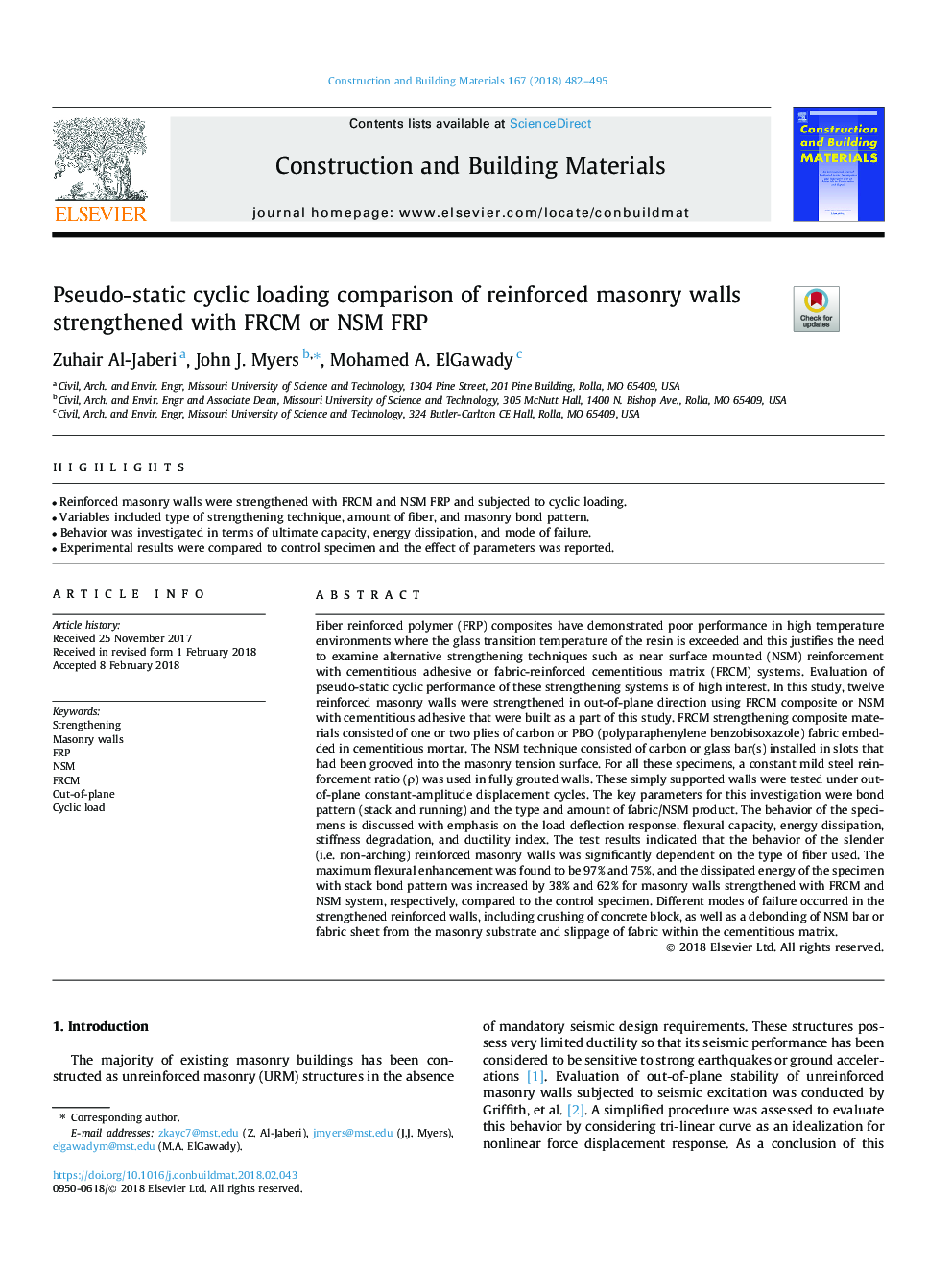| کد مقاله | کد نشریه | سال انتشار | مقاله انگلیسی | نسخه تمام متن |
|---|---|---|---|---|
| 6715143 | 1428739 | 2018 | 14 صفحه PDF | دانلود رایگان |
عنوان انگلیسی مقاله ISI
Pseudo-static cyclic loading comparison of reinforced masonry walls strengthened with FRCM or NSM FRP
دانلود مقاله + سفارش ترجمه
دانلود مقاله ISI انگلیسی
رایگان برای ایرانیان
کلمات کلیدی
موضوعات مرتبط
مهندسی و علوم پایه
سایر رشته های مهندسی
مهندسی عمران و سازه
پیش نمایش صفحه اول مقاله

چکیده انگلیسی
Fiber reinforced polymer (FRP) composites have demonstrated poor performance in high temperature environments where the glass transition temperature of the resin is exceeded and this justifies the need to examine alternative strengthening techniques such as near surface mounted (NSM) reinforcement with cementitious adhesive or fabric-reinforced cementitious matrix (FRCM) systems. Evaluation of pseudo-static cyclic performance of these strengthening systems is of high interest. In this study, twelve reinforced masonry walls were strengthened in out-of-plane direction using FRCM composite or NSM with cementitious adhesive that were built as a part of this study. FRCM strengthening composite materials consisted of one or two plies of carbon or PBO (polyparaphenylene benzobisoxazole) fabric embedded in cementitious mortar. The NSM technique consisted of carbon or glass bar(s) installed in slots that had been grooved into the masonry tension surface. For all these specimens, a constant mild steel reinforcement ratio (Ï) was used in fully grouted walls. These simply supported walls were tested under out-of-plane constant-amplitude displacement cycles. The key parameters for this investigation were bond pattern (stack and running) and the type and amount of fabric/NSM product. The behavior of the specimens is discussed with emphasis on the load deflection response, flexural capacity, energy dissipation, stiffness degradation, and ductility index. The test results indicated that the behavior of the slender (i.e. non-arching) reinforced masonry walls was significantly dependent on the type of fiber used. The maximum flexural enhancement was found to be 97% and 75%, and the dissipated energy of the specimen with stack bond pattern was increased by 38% and 62% for masonry walls strengthened with FRCM and NSM system, respectively, compared to the control specimen. Different modes of failure occurred in the strengthened reinforced walls, including crushing of concrete block, as well as a debonding of NSM bar or fabric sheet from the masonry substrate and slippage of fabric within the cementitious matrix.
ناشر
Database: Elsevier - ScienceDirect (ساینس دایرکت)
Journal: Construction and Building Materials - Volume 167, 10 April 2018, Pages 482-495
Journal: Construction and Building Materials - Volume 167, 10 April 2018, Pages 482-495
نویسندگان
Zuhair Al-Jaberi, John J. Myers, Mohamed A. ElGawady,